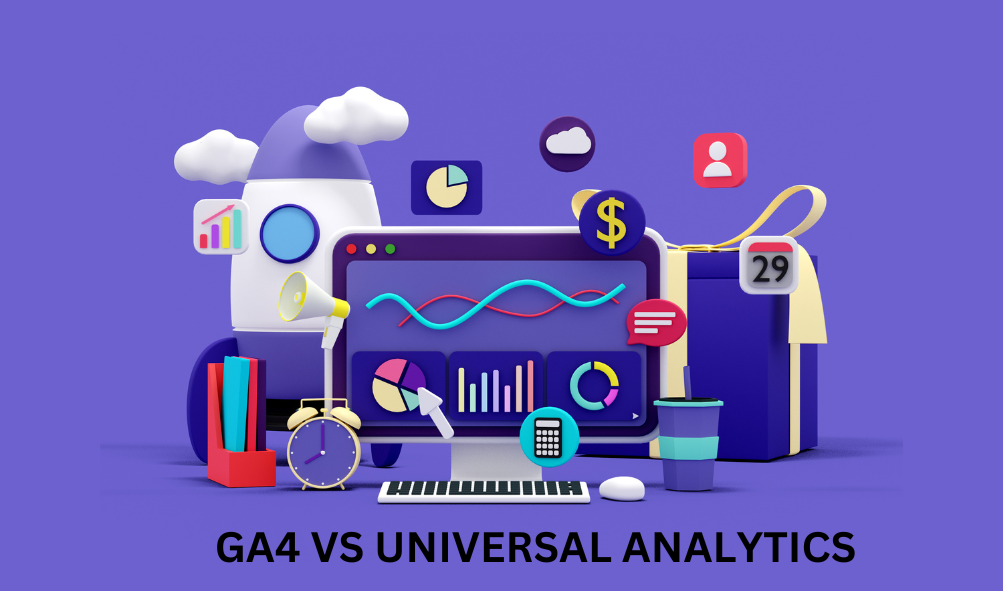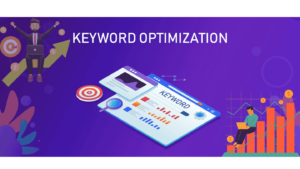Google Analytics is probably one of the most effective ones for grasping how users behave on your website. Now, the updated Google Analytics 4 (GA4) offers businesses a new range of features and options that are necessary for the effective marketing in a constantly developing digital world. Yet, many organisations are using the previous version Universal Analytics (UA) may be wondering how it is different from the new Google Analytics 4 and which of them is better for their company. This article explains major changes between GA4 and Universal Analytics comparing data tracking techniques, user interface features and touches upon why DM is the go-to tool for aligning your SEO strategy with GA4.
Key Differences
1. Event Based Tracking Vs Session Based Tracking
The categorization difference between GA4 and Universal Analytics is one of the most profound differences when it comes to data acquisition and arrangement. Its predecessor, Universal Analytics, operates based on the principles of a session. In this model, users’ actions are divided into sessions which last 30 minutes of inactivity or till the night time. Whatsoever occurs in a session is measured against session activity indicators including bounce rates and session length.
GA4 on the other hand uses an event based tracking model. This model is more detailed in its approach to data collection since each interaction is based on its own event. For instance, click through, scroll percentage, video plays, and form conversions are some of the event tracking which do not require a setting up of different goals for each of them. According to GA4, the individual behavior can be tracked significantly fine since it does not categorize interactions into sessions as in GAE. This shift also enables the marketer to focus on more detailed aspects of an individual event, and improve their understanding of user behavior.
2. Cross-Platform Tracking Improvement
Users in the current world engage with brands, and their products through multiple touchpoints and from various devices. This is the area where GA4 excels compared to UA, which is cross-platform tracking. With GA4, the tracking of specific data from websites and mobile apps under a single property give it a better view of user interactions.
Mobile application data could only be collected and processed separately because Universal Analytics could only collect data from websites. The incorporation of the interactions from both web and app allow businesses to get a clear picture of the consumer interactions and how they are switching between devices.
3. Easy Goals and Client Adjustments
In Universal Analytics, goal setup needed a good deal of configuration. It was mostly based on sessions and users needed to set a goal by turning on its session basis such as destinations goals or duration goals. The goals, in GA4, have been replaced by Conversion Events. Turning every single event into a conversion is equally easy by a click way, which in turn makes it simpler and more flexible.
Also, GA4 attributes the event based model which you can track more than one interaction which happens in the same page while Universal Analytics face lots of issues in tracking multiple scans or continuous click & replaying videos. This makes GA4 as one of the best options when it comes to companies who do not wish to tweak a lot in order to have an excellent device for analyzing results and trends.
4. Made Possible by Highly Developed Machine Learning Features
Here GA4 has a greatly enhanced and built-in ML compared to the Universal Analytics feature set of the previous version. Marketers can use GA4 to predict customer behaviours through probability of churn and purchase, hence marketer is able to prepare in advance for customers to make certain actions.
Universal Analytics did provide some limited custom reporting but GA4 is built with AI to forecast predictive analytics and help in trending and segmenting of the high-value audiences. This is particularly helpful to sites selling goods or services online or companies that require information on customer need anticipation to boost conversion rates.
5. Expanding Data Privacy & Compliance
As the aspect of data privacy has gained a significant importance in the world, GA4 has facilitated the corporate adoption of the GDPR and CCPA better. Some of the features of GA4 are consent mode and a more flexible way of controlling the amount and type of data collected by the tool.
While Universal Analytics also provided some compliance features, GA4 goes further by focusing on minimal tracking of clients’ IP addresses and providing users with better control over the period when collected data is retained. These aspects can minimize potential compliance risks about data privacy for businesses if they decide to collect information on users: that is why GA4 can be regarded as preferable for those who seek to address these issues.
6. User Interface and Reporting Changes
And one of the first things that will be noticeable in GA4 is the change in User Interface, or rather the complete overhaul of how it looks compared to Universal Analytics. Explorations are lower down on the GA4 GUI, but they are a core part of GA4 and an apt representation of the title: Flexible to a Fault They’re the keystone to the GA4 user experience and run across the top of the screen alongside account information and the navigation bar.
Unlike the earlier version of GA, Universal Analytics that gave default report categories such as ‘Audience,’ ‘Acquisition,’ ‘Behaviour,’ and ‘Conversions’, GA4 writes event-based analytics in figures significant to the user. It also changes the positioning of GA4 towards being more consistent and flexible, as well as providing users with a more personalized data service.
7. Funnel Analysis and User Pathing
Another area where GA4 outperforms Universal Analytics is funnel analysis. In UA, creating detailed funnel reports were possible only through advanced setups or through third-party tools. With GA4, path analysis and funnel reporting become standard reports that help businesses analyze user journeys better.
By enhancing the reporting tools, GA4 provides ways of how these users are dropping off and how content download or navigation can be improved to enhance the conversion rate. This is a particularly potent funnel analysis for organizations wishing to fine-tune their approaches based on specific and practical insight.
8. A Comparison of Data Retention and Sampling
However, concerning the data retention policies, they drastically vary with the two versions. In Universal Analytics, data retention went as far as in perpetuity, enabling businesses to keep tracking data indefinitely. GA4, though, has more stringent data retention settings working at the core and sets the default to only 14 months.
Sampling has not been the same in GA4. Sampling of data is used when there is a need to process large quantities of data and Universal Analytics applied sampling on big datasets that may lower the accuracy of the reports. There are, however, improvements over GA4; the sampling technique is more complex and currently permits data that is unsampled under particular circumstances thus providing more genuine insight into users’ behavior.
Choosing GA4 for Future-Proof Analytics with The DMS
In today’s world of social media marketing for businesses that strive to be in the limelight, GA4 is a must. I believe its event-based tracking model, and machine learning, along with the cross-platform functionality, and adaptable report form or report design, reflect the contemporary SEO and analytics requirements perfectly. Though, it will be beneficial to migrate to GA4 along with optimizing all of its features is possible only after gaining a comprehensive understanding of how it works with SEO.
THE DMS is one of the leading SEO and SMO service providers, and the company is expert at helping businesses through this transition. The DMS, with its main concern of GA4 and great SEO methods, ensures that our clients have professional guidance in how to properly comprehend GA4 data and how to make improvements and connect effectively with your target market. With the help of tracking and analysis tools of GA4, The DMS guarantees not only a deeper comprehension of user behavior but also market competitiveness.
Conclusion
we see that Universal Analytics was a great tool at its time, whereas GA4 is the analytics of the future. Together with enhanced capabilities and the professional support and guidance of The DMS, businesses are able to take the reigns of their data management and achieve superior SEO results in a constantly digitalising world.





